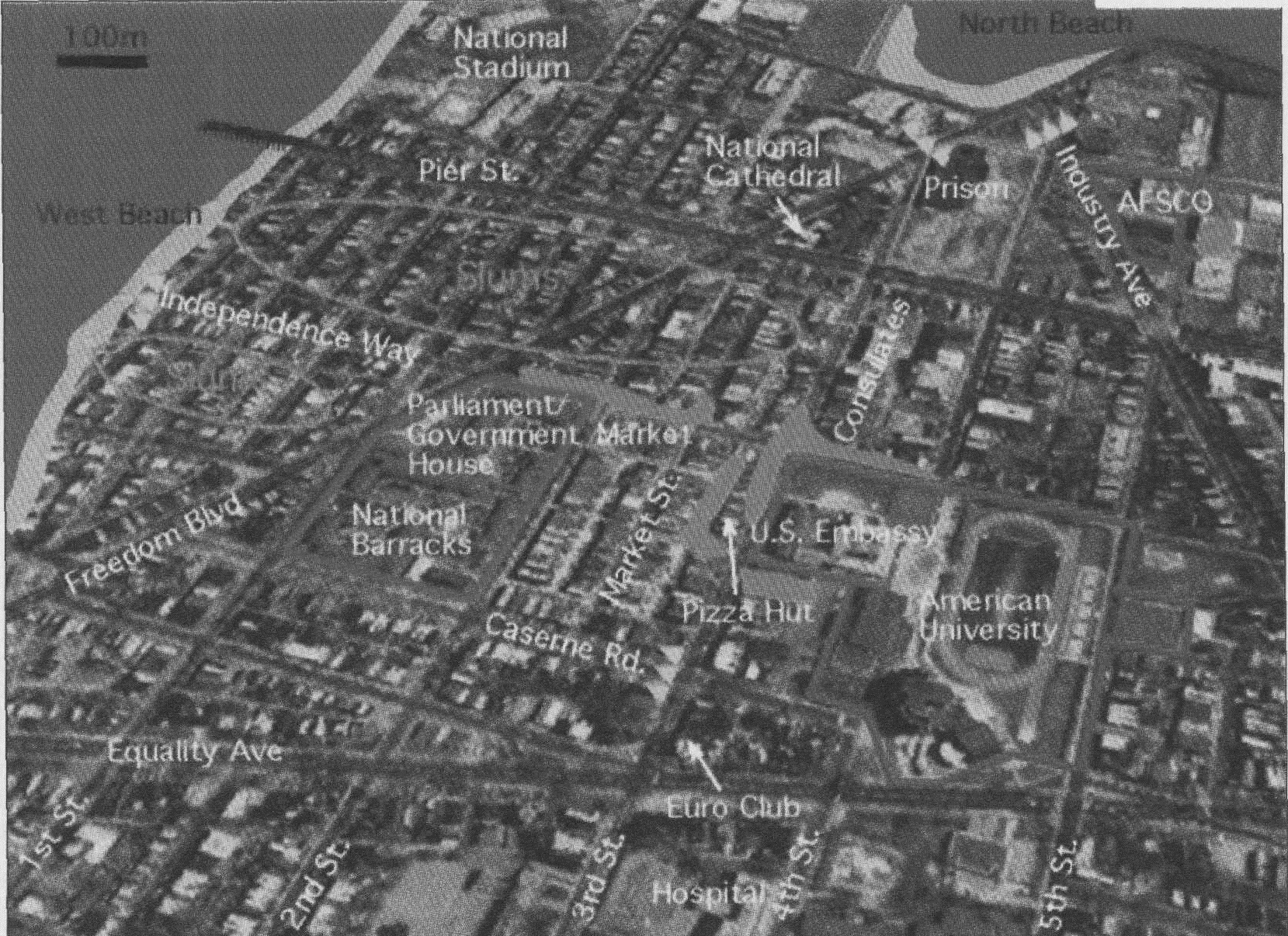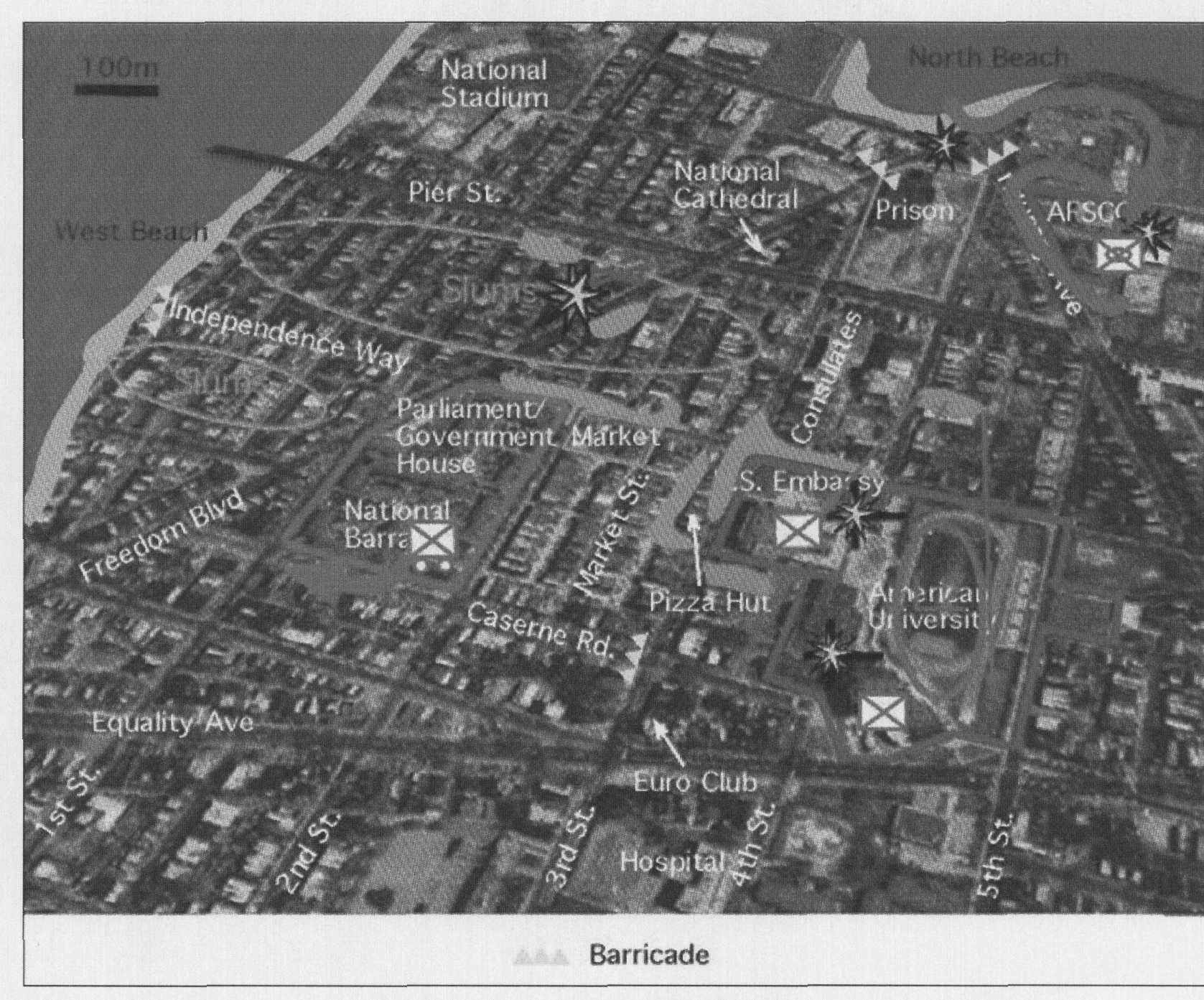By Capt Paul C. Merida
Situation
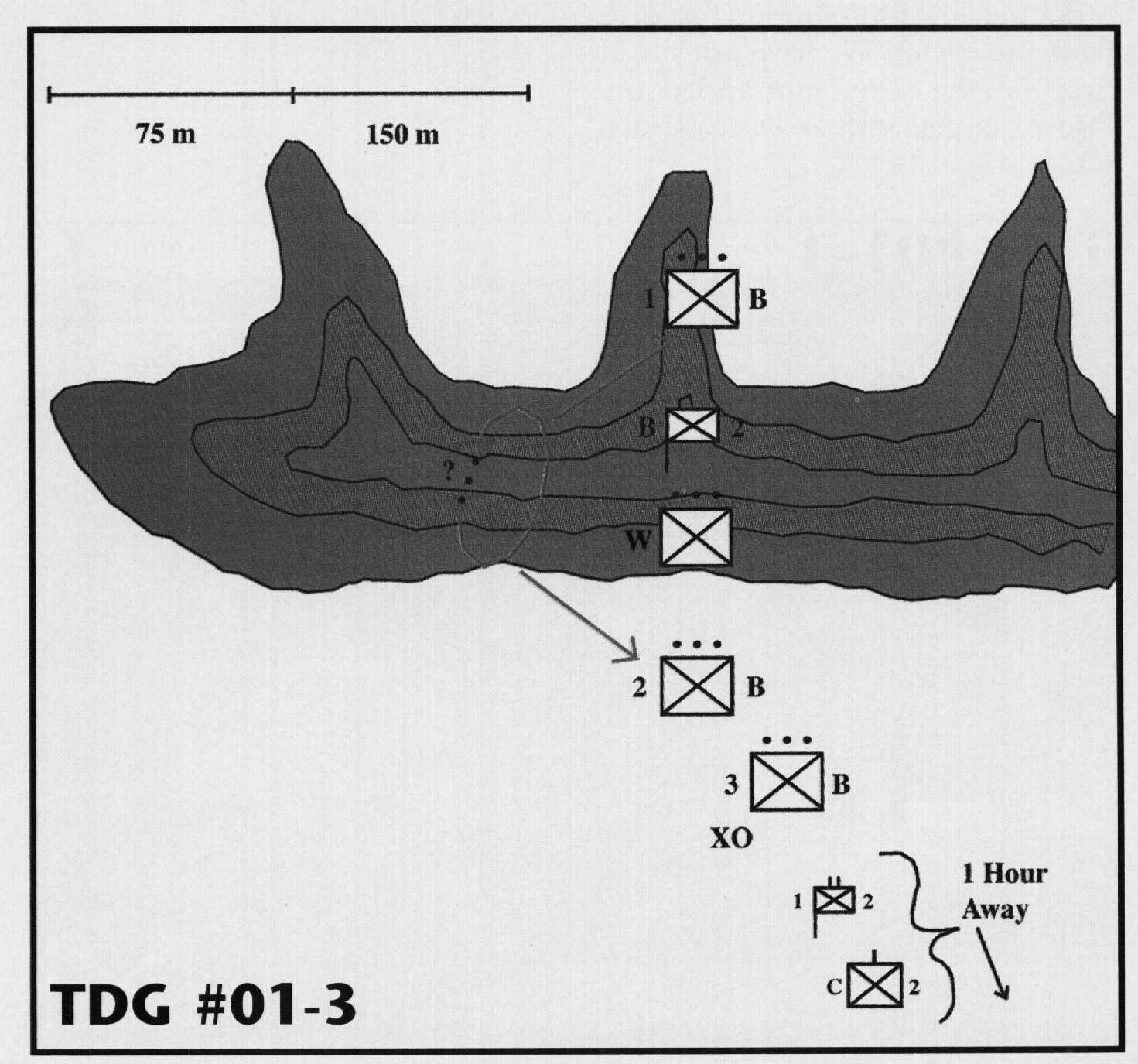 You are the executive officer (XO) of Bravo Company, 1st Battalion, 2d Marines. Bravo Company crossed the line of departure 1 hour ago and is moving 7 kilometers to its tentative assault position. The battalion’s two– company attack (Bravo and Charlie Companies) is scheduled to go at 0400. The battalion commander’s goal is to move two companies around the flank of the enemy and attack them from the rear, as well as cut their only line of communications.
You are the executive officer (XO) of Bravo Company, 1st Battalion, 2d Marines. Bravo Company crossed the line of departure 1 hour ago and is moving 7 kilometers to its tentative assault position. The battalion’s two– company attack (Bravo and Charlie Companies) is scheduled to go at 0400. The battalion commander’s goal is to move two companies around the flank of the enemy and attack them from the rear, as well as cut their only line of communications.
Bravo Company is moving in a column formation. One kilometer (about 1 hour) behind you is the battalion forward command post and Charlie Company. The terrain is rough, several ridges and hills covered with thick vegetation lie across your route. Visibility in most areas is no more than 50-75 meters. Enemy presence in this area has not yet been detected by the battalion’s surveillance and target acquisition teams. As a result your company commander is really “stepping it out” in an effort to reach the assault position on time (1000).
You’re located in the rear of the company with the company gunny and the training noncommissioned officer who is carrying the radio. At 1700, the company is climbing one of the many steep ridges in your path. Ist Platoon has crossed the ridge and is descending the opposite side down a narrow finger. In the middle of the column, the company headquarters element and weapons platoon are at the top of the ridge. 2d and 3d Platoon are yet to begin their ascent. Suddenly, near the top of the ridge, an enormous amount of small arms fire erupts. Several machineguns are in action, and several explosions go off as well.
The gunfire dies down a bit and you attempt to raise the commanding officer (CO) on the radio. Unfortunately, you can’t raise him or the mortar section for that matter. 1st Platoon commander comes on the hook and reports that the CO and weapons platoon got hit hard. There was a large ambush on top of the hill. He believes that some of weapons platoon is still pinned down, but they’ve suffered a lot of casualties. He also reports his rear squad is engaged with a platoon-size element.
2d Platoon reports numerous casualties from weapons platoon and that he’s exchanging fire with the enemy.
At that moment, 2d and 3d Platoons begin receiving mortar fire. Both platoons, as well as yourself, quickly hit the deck.
What now XO?
Requirement
Within 2 minutes issue orders to your platoons. Provide your plan of attack with a sketch and a brief explanation of your plan. Submit your solution with rationale to Marine Corps Gazette. TDG #01-3, P.O. Box 1775, Quantico, VA 22134 or fax 703-630-9147.
For more detailed information on the structure of Marine Corps units, Marine Corps equipment, and symbols used in TDG sketches, see MCG, Oct94, pp. 53-56 and the modification reported in Jan95, p. 5.


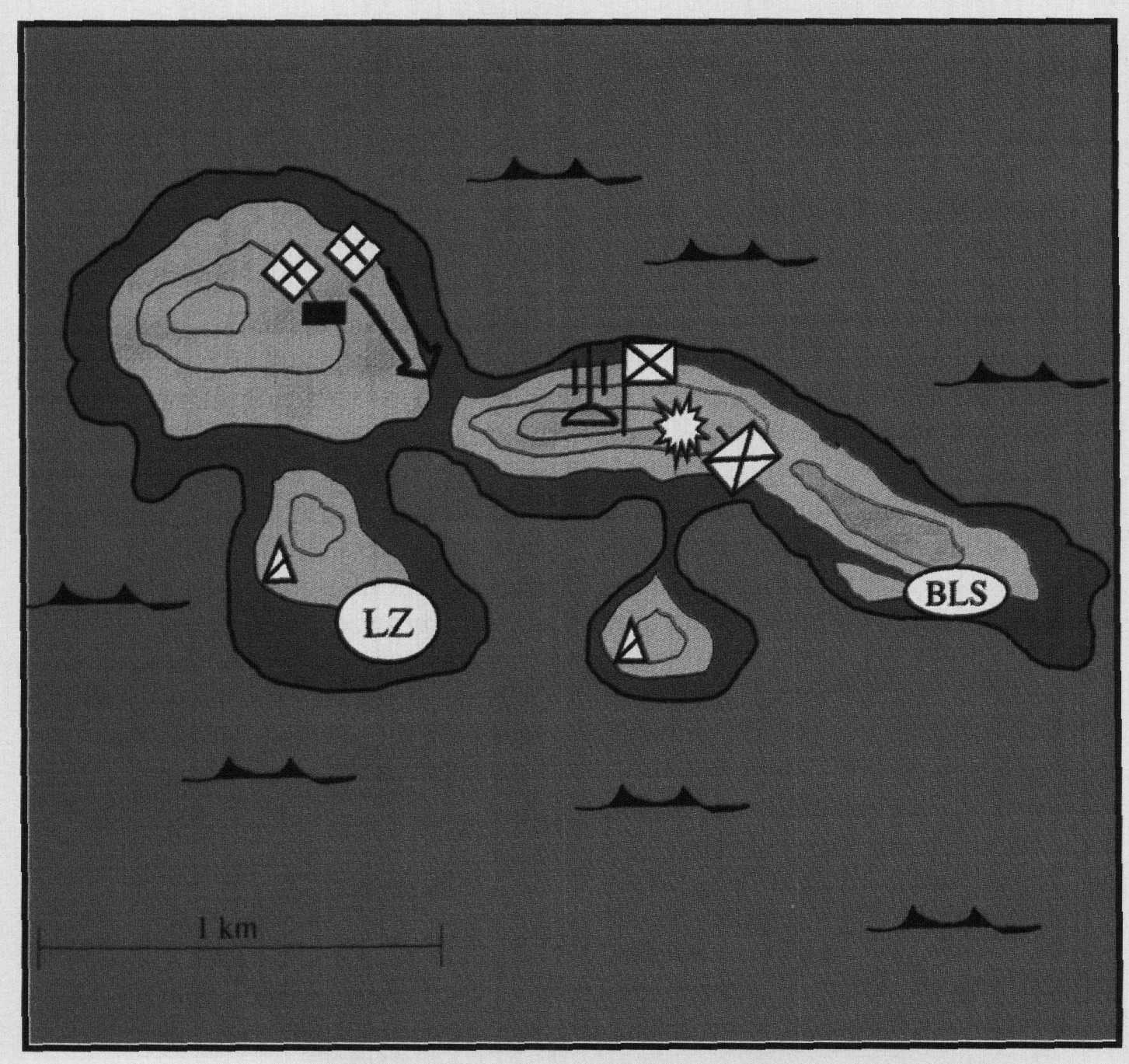
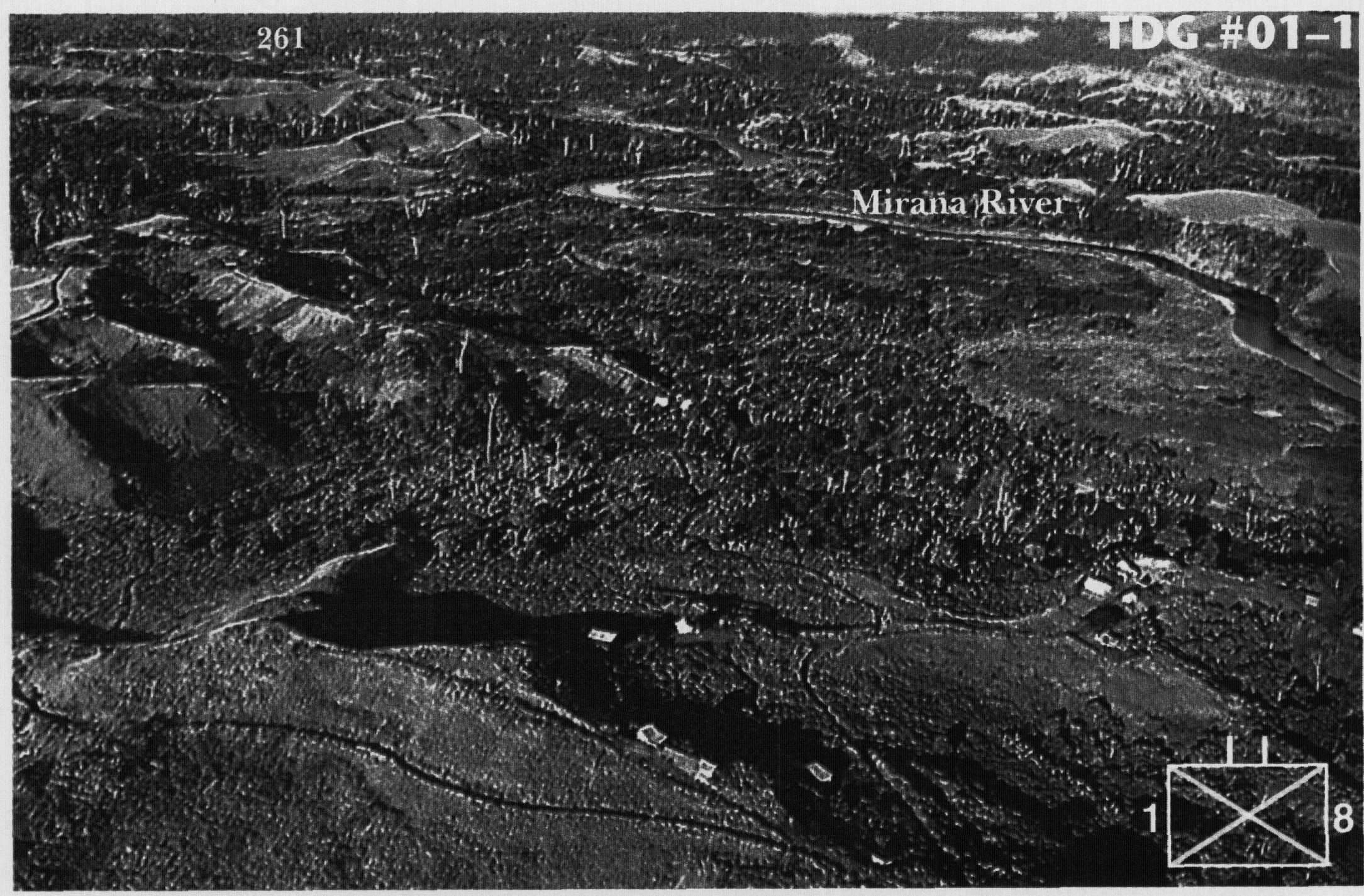
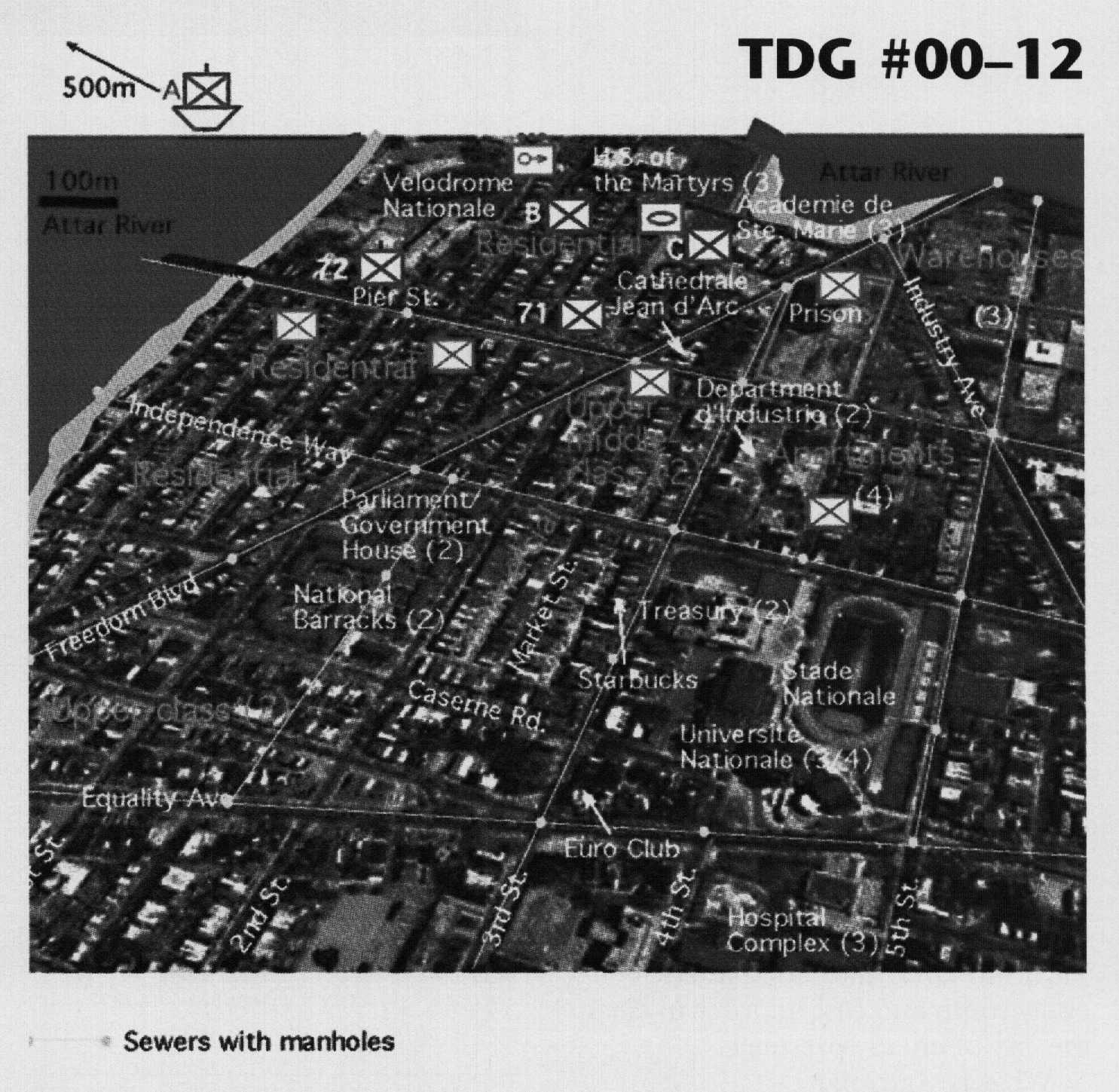
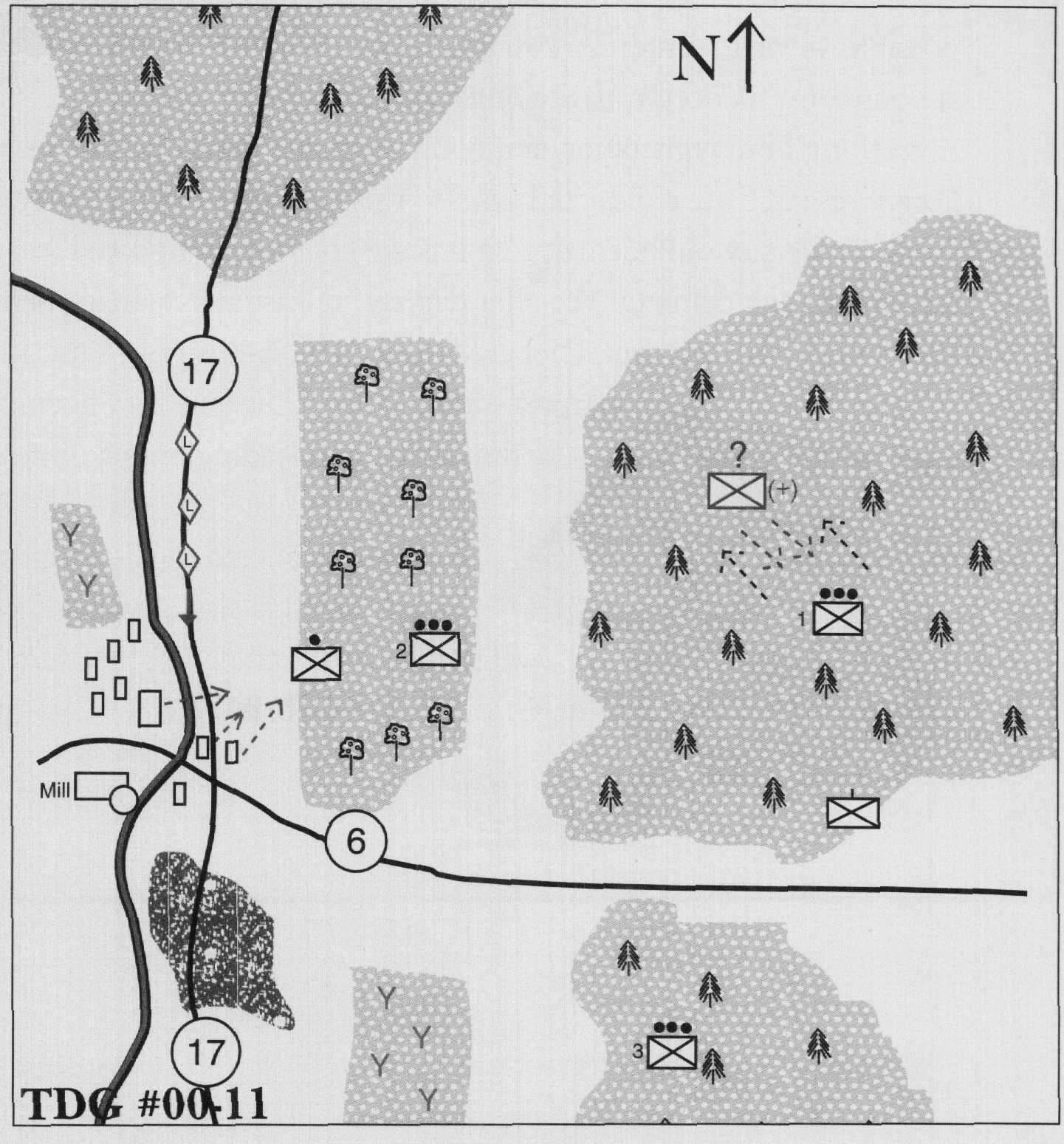
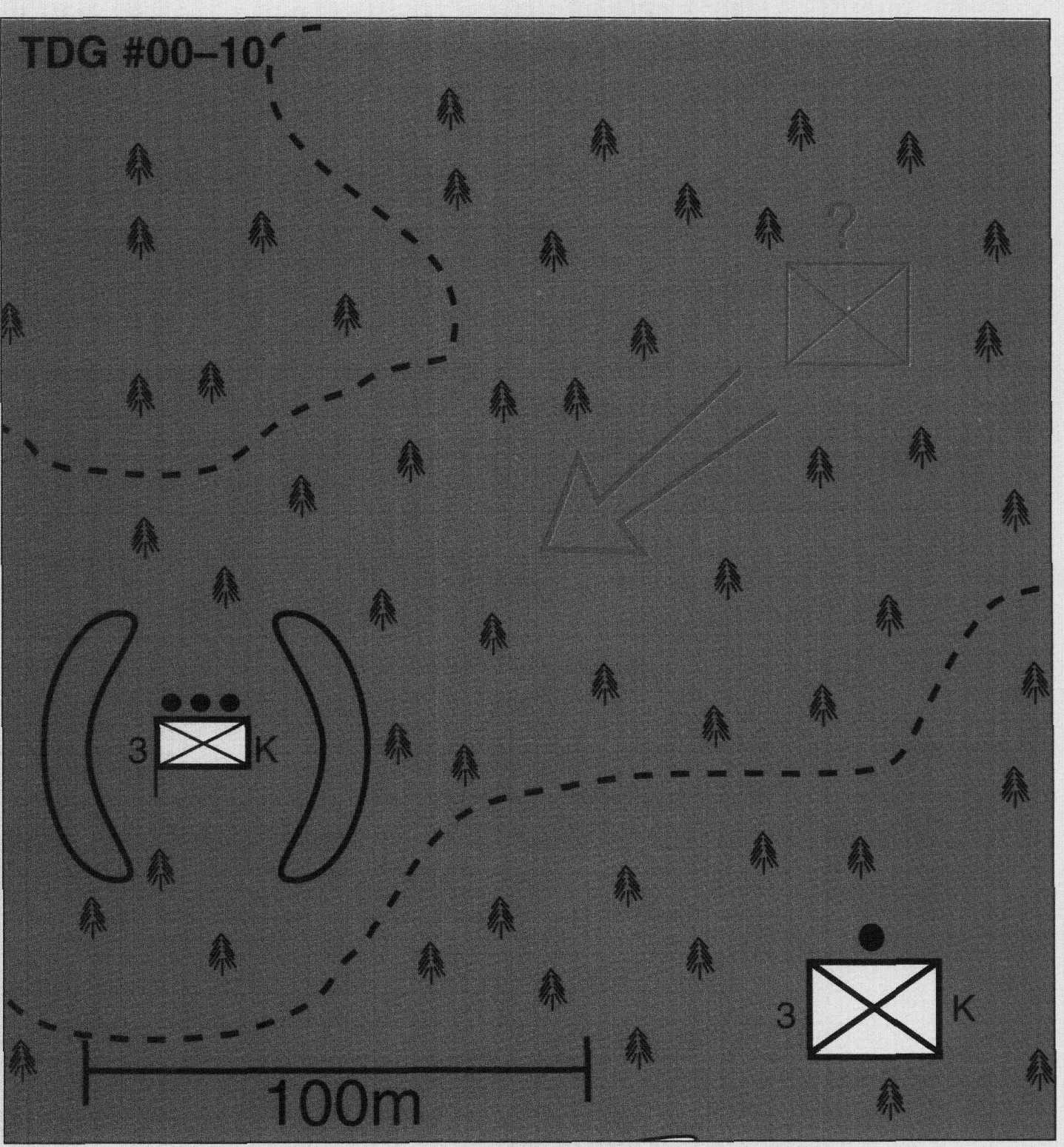
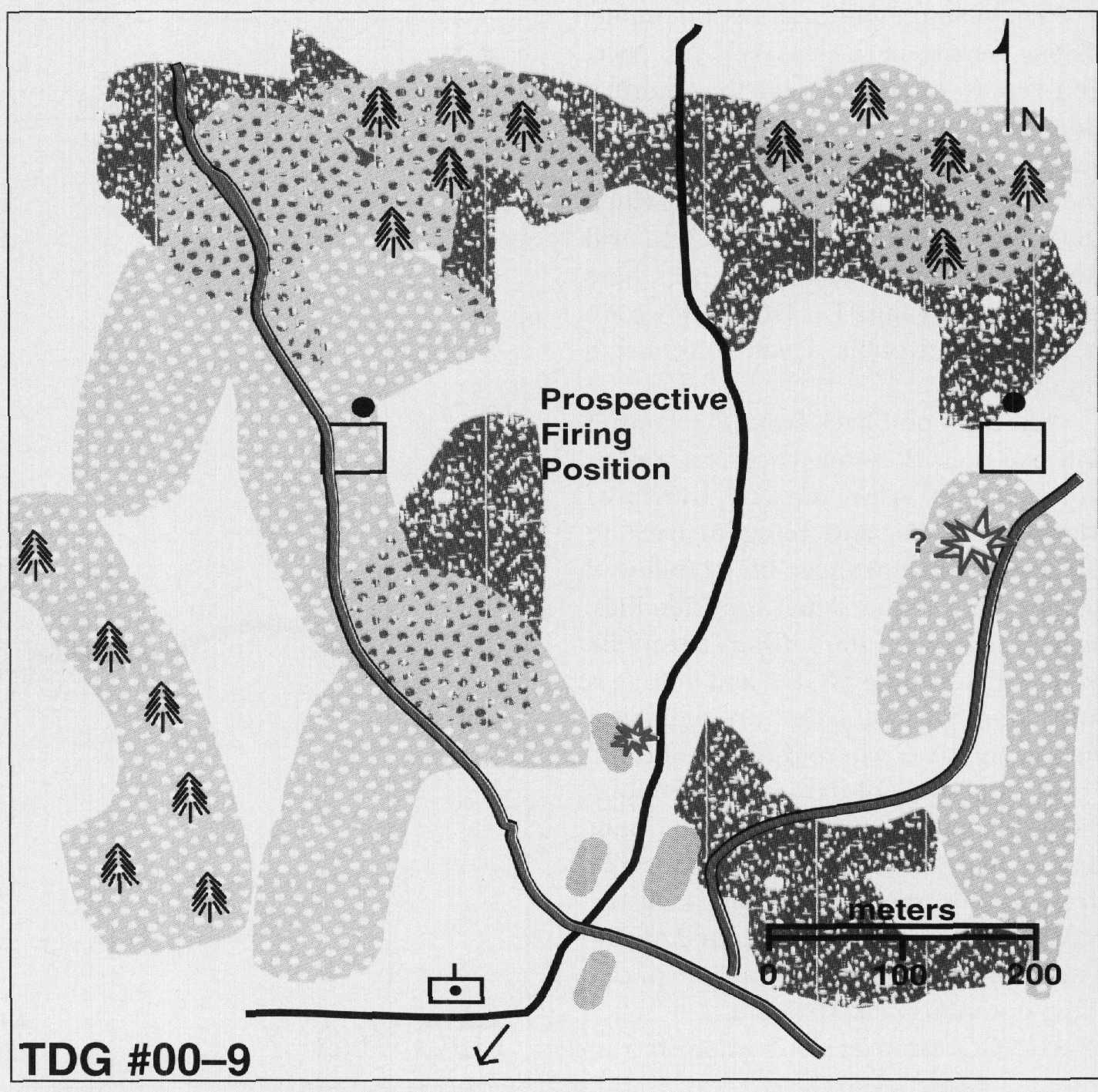
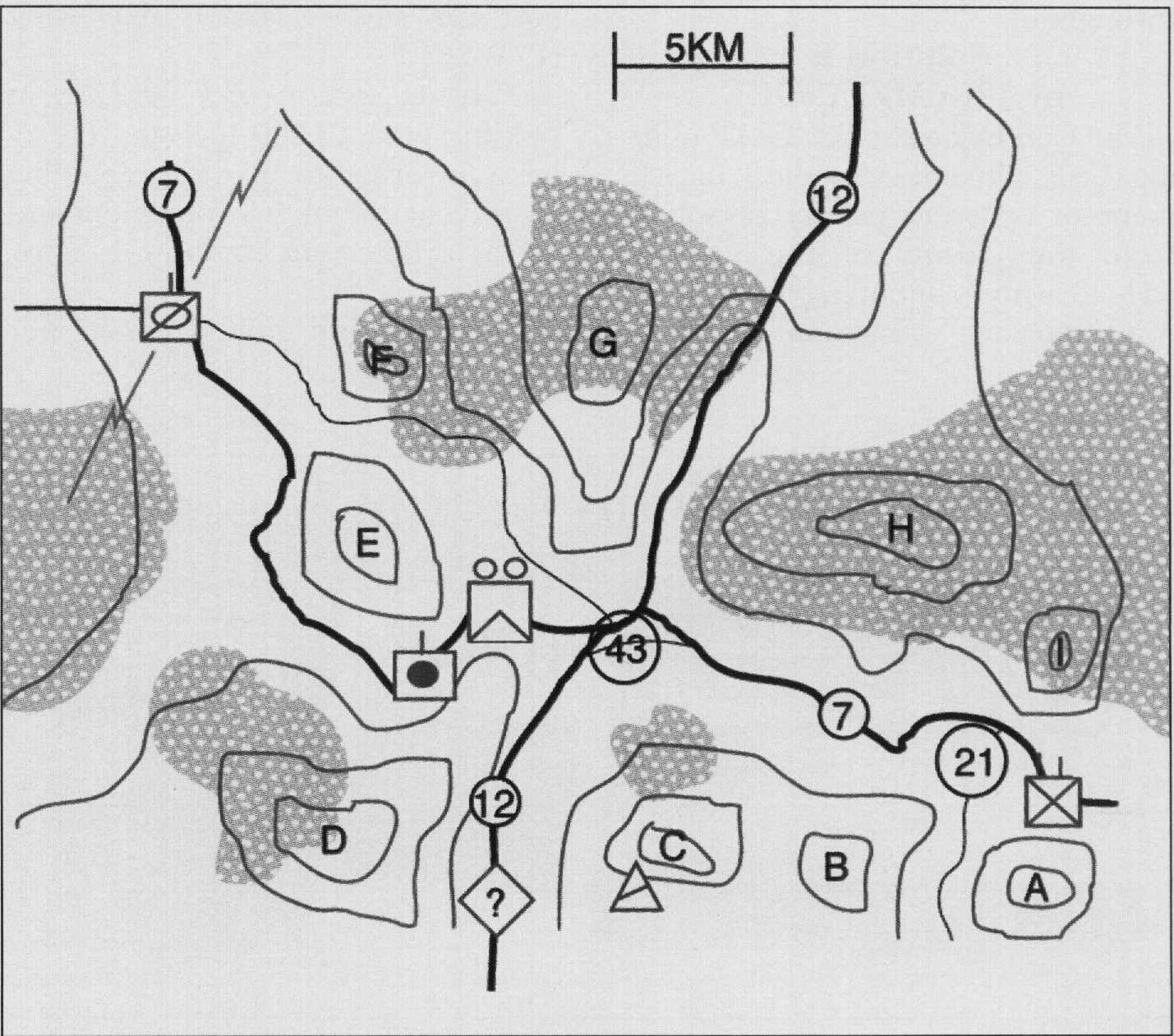
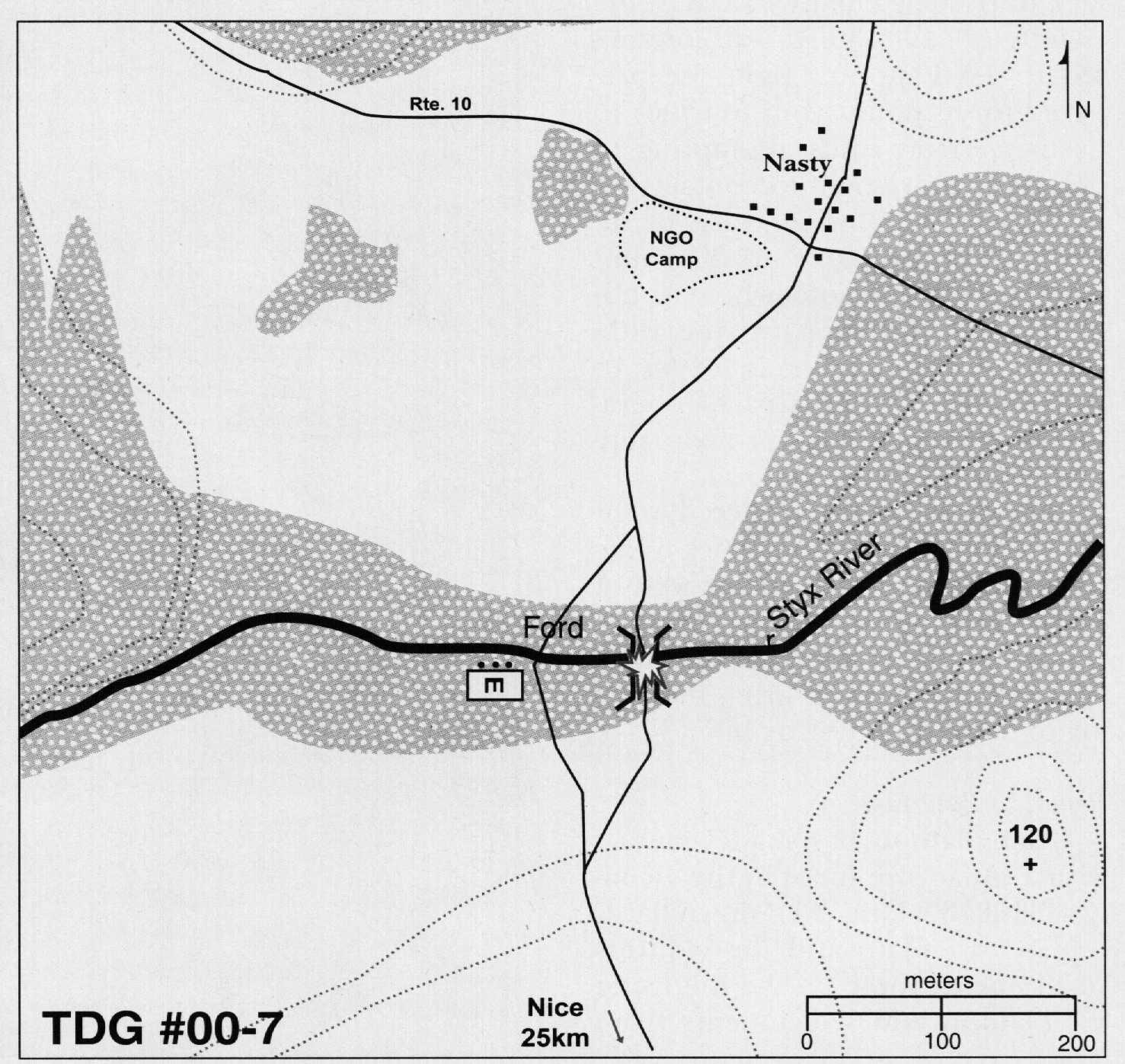
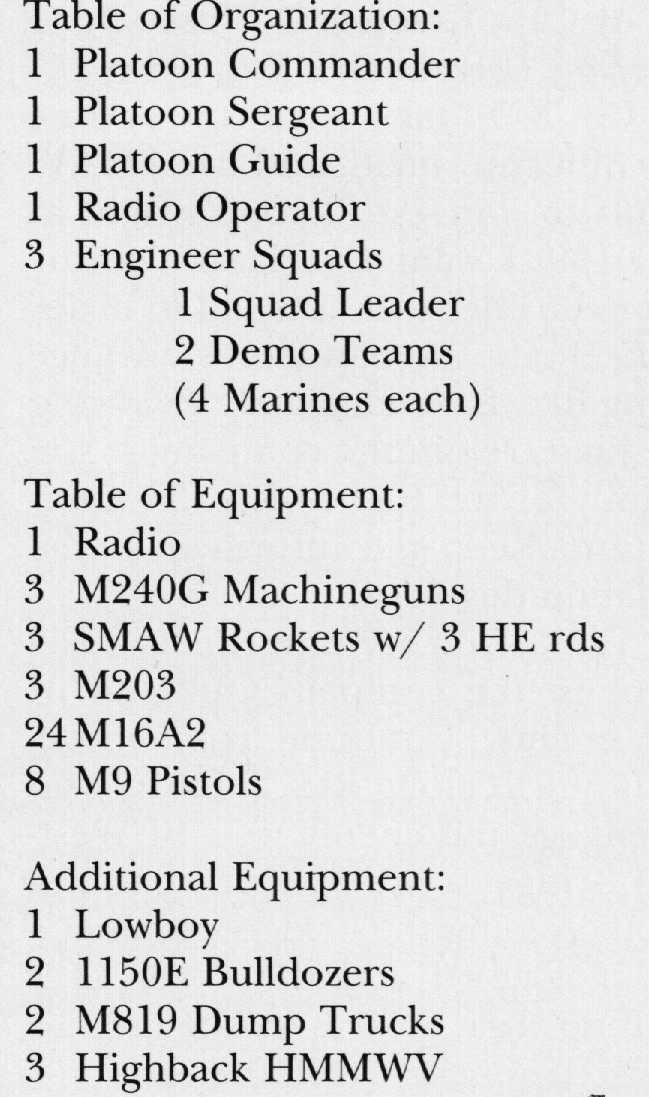 Requirement
Requirement